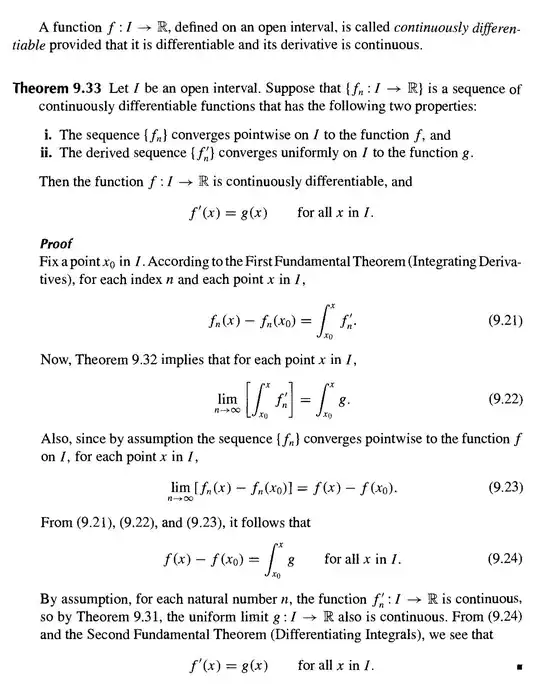The following text is from the book Advanced Calculus by Patrick M. Fitzpatrick :
There are two things that I don't understand with the proof :
1- In order that the last equation (last line) to hold, the proof must also show that $f(x)$ is continuous but it doesn't. The sequence ${\{f_n}\}$ to be pointwise convergent to $f$ doesn't guarantee that $f$ is contentious on $I$. How to show that $f$ is contentious on $I$?
2- A part of the first claim of the two-claim of the theorem is $f$ is differentiable but it doesn't prove that. How to show that $f$ is differentiable on $I$?
